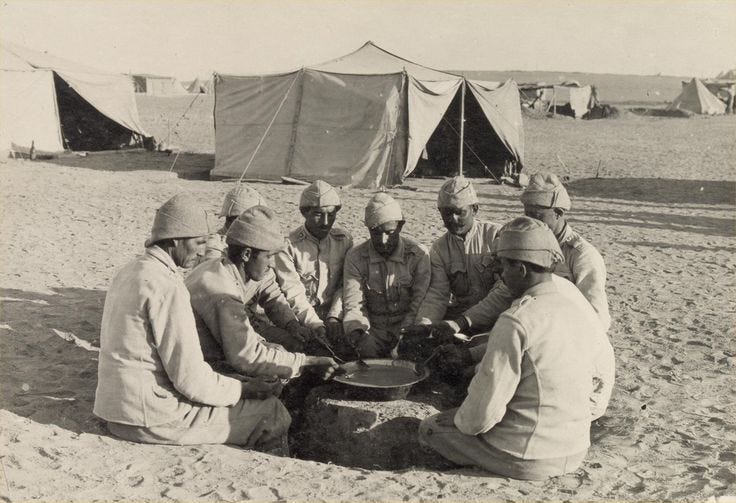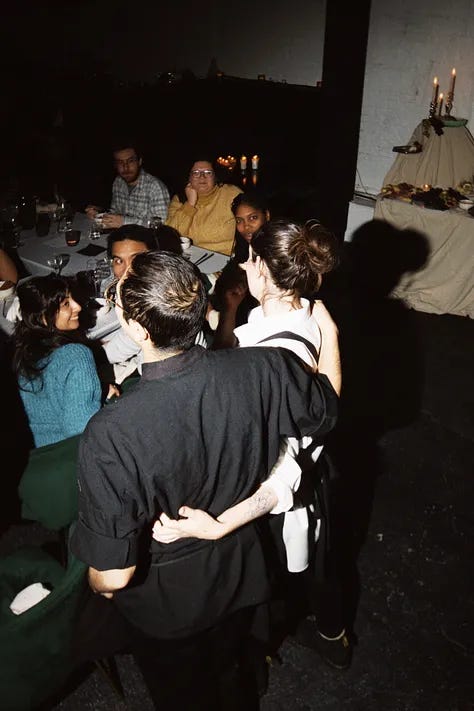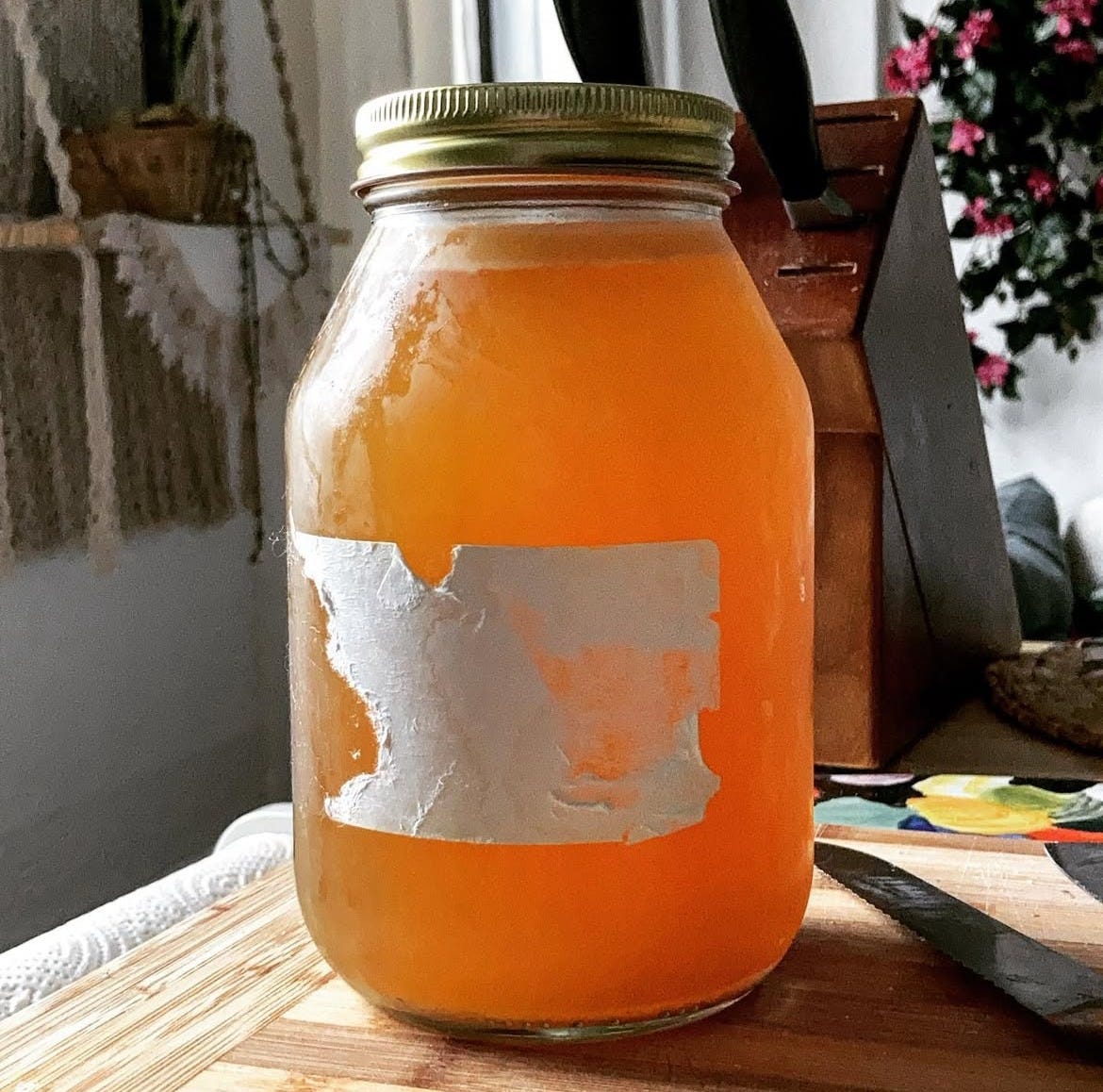Hello dear friends from the rapidly crumbling imperial core! I hope everyone is taking good care of their physical and mental health, showing kindness to our loved ones and neighbors, and managing to find some moments of delight among the rubble. Some say that on average empires only last about 250 years, so it’s possible that America’s time as master of the universe is just up. But some things never change, no matter who’s in power, no matter the state of the world: the seasons come and go, the sun rises and sets, and through it all we need to cook and eat, just as we always have.
I just want to quickly acknowledge that it can feel cringey to advertise a private supper club these days, especially in light of the famines happening in Palestine and Africa, global emergencies that we are quite literally watching in real time on an alarming scale. There can be a sense of helplessness living in the comfort of the west- even if I do currently live in an egg desert (a grim personal tragedy). I have to remind myself that changing the world starts small, and just being a good neighbor, friend and community member can have a powerful ripple effect. And, we all have our own myriad gifts and unique ways of giving back to the world. For me, it’s food- studying it, talking about it, cooking it and feeding it to people with love.
Cringey or not, these supper clubs are really the perfect vehicle for sharing that. It brings me great joy to spend time crafting these menus, thinking about unifying themes and discovering the culinary storytelling that flows naturally from the ingredients and dishes themselves; I want to impart that sense of joy and wonder to those involved in these experiences. And so, friends near and far, thank you for supporting us- whether by attending, liking a post, or even just telling me how cool it looks, we’re grateful for it all <3
This spring (*updated date! 4/29 at Umbra*), we at the dine well supper club really wanted to build a dinner around the idea of food as medicine, featuring as many healing plants and ingredients as we could. I really can’t think of a better time to explore culinary herbal and plant medicine. Not only is the world is burning around us, but we are also experiencing the rebirth of spring, and with it many of the humble and weedy herbs that quietly boast a world of healing properties. Both Dario and I have been long-time students of food as medicine, from both personal healing and an intellectual perspectives. Both of us have spent many years navigating the western/allopathic medical system, and have turned to various holistic models when western medicine fell short; we both love the many facets of our favorite ingredients- taste, history, beneficial properties.
One of my favorite things about plant medicine in particular is the ancient air of mystery about it. Science has more recently de-mystified a lot of the healing properties of foods, identifying high vitamin A or magnesium or antioxidants, but for millennia this traditional knowledge was just passed on, committed to memory and eventually written down. I love to imagine how early peoples discovered the beneficial properties of the plants in their area, who kept and preserved that information, and who administered the plants to “patients” (mostly women, until relatively recently). There’s that classic bit about cavemen teaching each other about mushrooms, saying “well that one was delicious, that one makes you see god, and that one killed Greg".
As Dario will tell you, I really dug my heels in about including a course centered around chicken broth. I may have even been insufferable about it. Anyone who knows me knows about my lifelong love affair with broth- a chicken stock that gelled was one of the first culinary techniques I practiced and mastered long ago when cooking was just a hobby for me, before Brodo even. I went so far as to do a chicken stock tutorial here to try and impart my self-professed expertise on the world. I’ve always had a soft spot for the “Jewish penicillin” moniker- it conjures up many Passover memories of biting into pillowy-soft matzah balls bathed in warm broth, just a few sparse pieces of carrot and onion floating nearby, feeling nourished and comforted from the inside out.
Broth, of course, is probably the oldest food- people started boiling their animal bones in water to extract all the nutrients possible from an animal. It’s universally revered as one of the ultimate healing foods, being packed with nutrients, hydrating, and very easy to digest. Soups were likely born as women, the gatherers, added more elements to broths based on their knowledge of which ones tasted good, which ones made you trip balls and which ones killed you.
Was soup-making was the beginning of cooking? Who’s to say, but it is true that the word “restaurant” comes from the French meaning “something restorative”; as early as the 1500s, it referred to a concentrated, inexpensive broth peddled by street vendors as a remedy for exhaustion (I can imagine 15th century French peasant life was indeed exhausting). Eventually in 1765, “a Parisian entrepreneur opened a shop specializing in such soups. This prompted the use of the modern word restaurant to refer to eating establishments.” (This is all from the wikipedia page for soup, and if you’ve ever wondered if I’ve googled things like “history of soup”, yes, yes I have.)
As more and more restaurants appeared, broths became one of the pillars of classical (French) cooking, both in antiquity and modernity. Any classically trained chef will attest to the beauty of a consommé, the importance of quality stock for any of the mother sauces or a good coq au vin. And this is just in the west. East and southeast Asia all feature slow-simmered broths and soups as central elements of their every day cuisine (my personal favorites being udon, bun bo hue and kimchi jjigae), not to mention the sopas and consommés of the Americas and the myriad stews from all over Africa. Regardless of color or creed, we all have soup in common.
If you’ve been reading dine well for awhile, you’ll notice that I love literary references to traditional foods and culinary themes. There’s a beautiful albeit sad story about the healing power of broth in the Willa Cather novel Sapphira and the Slave Girl. Cather describes a diptheria epidemic one winter in antebellum Virginia, and a reverend who’s on his way to help a family care for their two very sick daughters. As he approaches the house, he sees one of the daughters, Mary, ghostly and “floating” downstairs in her nightdress “as if she were sleepwalking”. Mary collapses in to a chair at the table, grasps a giant pot of chicken broth cooling nearby, and lifts it directly to her lips; resting her elbows on the table, Mary drinks the entire pot of broth without stopping. She then floats back up the stairs and sleeps soundly for many hours- when her mother lifts a candle to her face, she “could see that she was better”. Unfortunately the other daughter, Betty, having had no nourishment, quietly passes during the night.

The good news is that for our next supper club, I did succeed in getting the chicken soup course I demanded :) it’s going to be a homemade chicken broth using Prince Abou’s local pastured chicken, clarified into a consommé; baby yu choi from my neighbors at Allwell Greens, and a handmade dumpling with Prince Abou’s lamb and northern Chinese aromatics like sichuan peppercorn, shaoxing wine, cumin and coriander. I love the culinary journey that this menu takes you on- from Islamic Chinese comfort foods to Jean Georges-style locavore fare; a soothing classic Italian dish with a twist to native northeast American elements paired with an unusual heritage grain. You can find the complete menu here (and tickets here) :)
Hope to host you soon- at this dinner or a future one <3 Until next time- happy spring! xoxoxox






